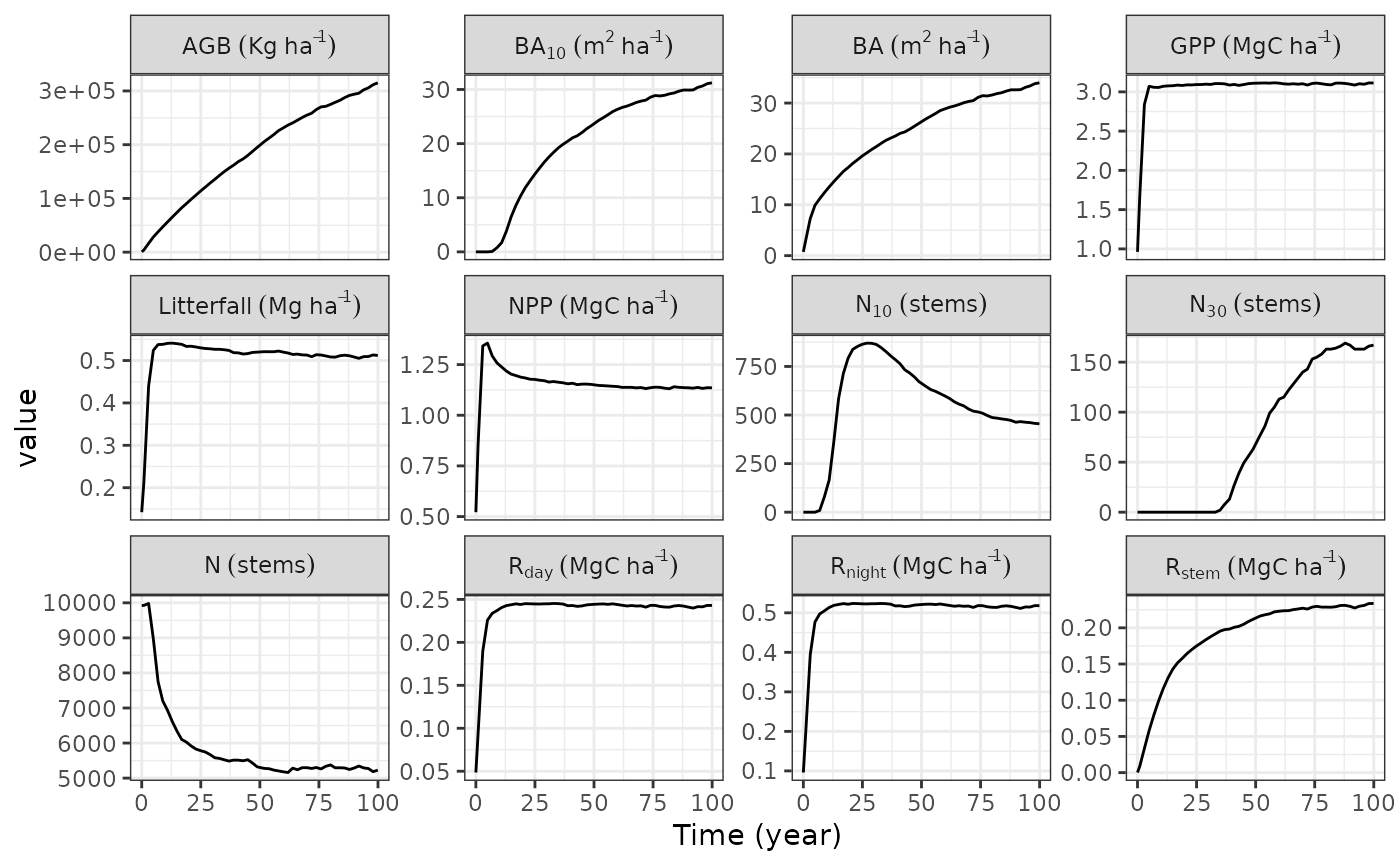autoplot() is a method that takes advantage of ggplot2 to plot TROLL
simulations. autoplot() can plot either temporal trajectories of whole
ecosystem or species metrics (what = 'temporal'), the initial or final
pattern observed in the forest community (what = 'spatial' or what = 'distribution'), or lidar outputs (what = 'lidar'). Metrics includes
abundances of individuals above 1cm (N), above 10cm (N10), and above 30cm
(N30), aboveground biomass (AGB), basal area of individuals above 1cm (BA),
and above 10cm (BA10), gross primary production (GPP), net primary production
(NPP), respiration of day (Rday), night (Rnight) and stem (Rstem), and
litterfall.
# S4 method for class 'trollsim'
autoplot(
object,
what = "temporal",
variables = NULL,
species = NULL,
iter = NULL
)Arguments
- object
TROLL simulation or stack (see
troll(),stack(),trollsim()andtrollstack()).- what
char. What to plot: "temporal", "spatial" "distribution", or "lidar". "temporal" is for temporal trajectories of the whole ecosystem or defined species. "spatial" is for spatial patterns in the initial or final forest. "distribution" is for metrics distribution in the initial or final forest. "lidar" is for canopy height model plot.
- variables
char. Which variable(s) to plot. Only one variable is accepted when plotting "spatial".
- species
char. Which species to plot. NULL indicates the whole ecosystem level. "all" can be used to use all species.
- iter
char. Which iteration(s) to plot, for temporal thinning or to specify which forest to plot. "initial" or "final" can be used. NULL is converted to "final".
Value
A ggplot2 object.
See also
Examples
data("TROLLv3_output")
autoplot(TROLLv3_output)
